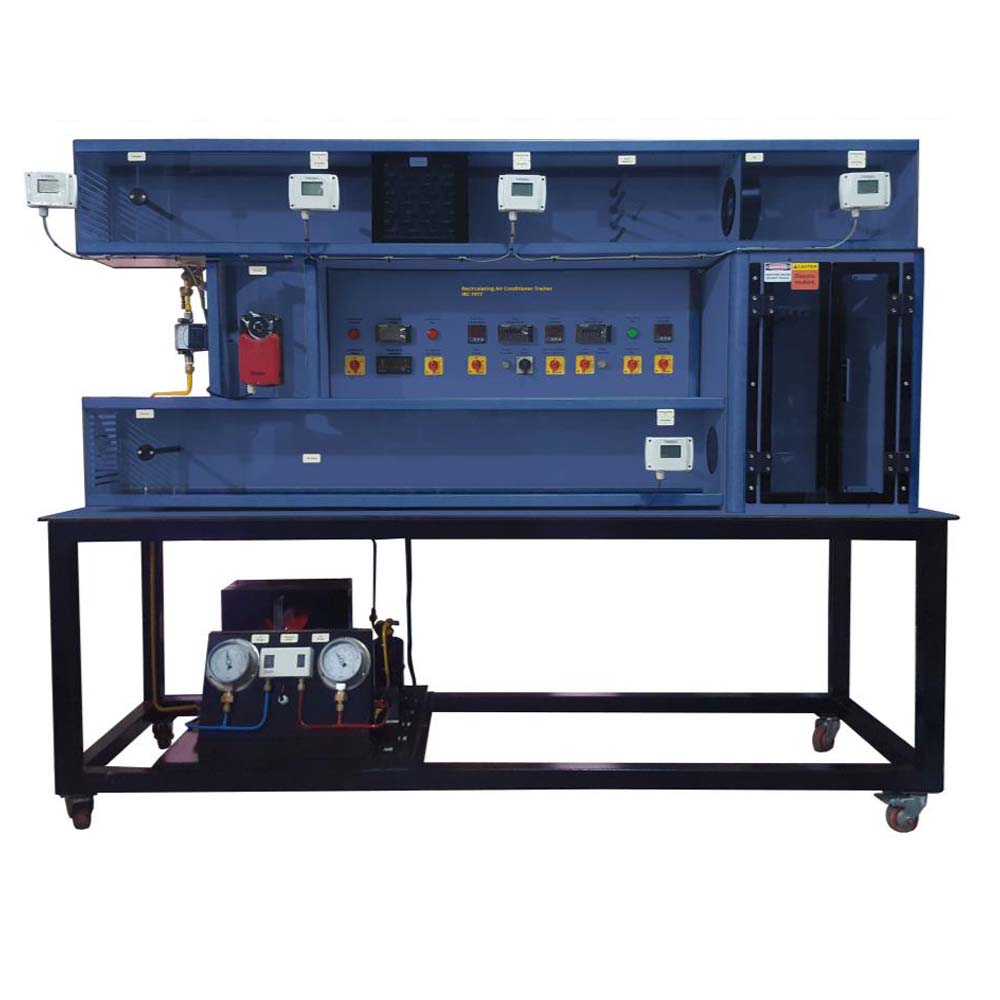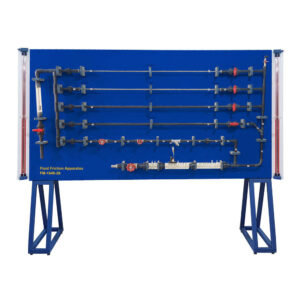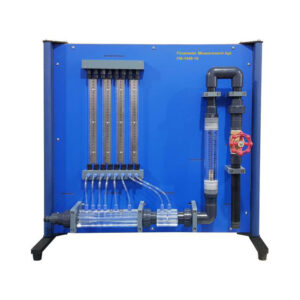Air conditioning technology is a key topic in building services engineering. Because of this, air conditioning technology has a significant impact on how engineers and skilled personnel are trained. A complete air conditioning system complete with an air duct and climate chamber is shown by the clear trainer. The air cooler with a condensing unit, fan, steam humidifier, and air heater are the major elements of the air conditioning system. The air distribution in the air conditioning system is managed by three motorized ventilation flaps. There are two different heat sources in the climatic chamber (wet and dry). At relevant locations in the air duct, temperature and relative humidity are detected and digitally displayed. Two manometers, thermocouples at relevant points, and a flow meter all give the necessary measurements for the refrigeration circuit. Manual control is used to operate air conditioning. A key feature of the air conditioning system is that it is fully ready for various automation solutions. The user can thus focus on this important topic during a lesson. The following solutions are available:
Software IRC-1917SW (optional)
DAQ software specially designed in National Instrument™, LABVIEW™ environment to measure and calculate the results of apparatus. The software is optional and while using software a set of electronic sensors are included. Software can be run with any Windows™ environment.




